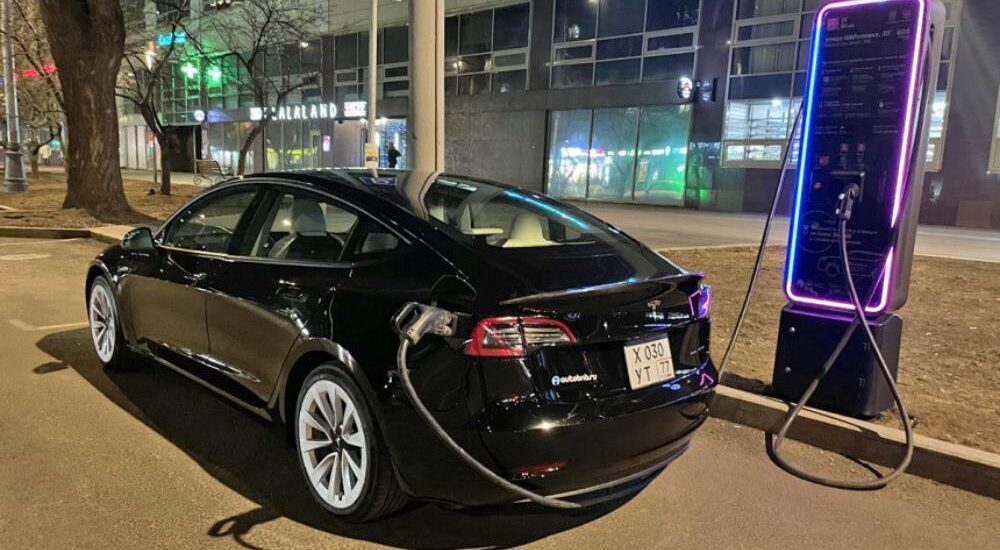The third installment of my Tesla exploration was drafted long ago. However, previous articles (Part 1, Part 2) made me reflect: Am I truly enchanted by my electric vehicle, or am I just convincing myself of its allure? Thus, over the last two months, I’ve taken a more discerning look at the Tesla, evaluating it not just as a novel gadget but as a car in its own right, leading me to rewrite my entire perspective.
Critically examining my Tesla, I walked around it, scrutinizing it from every angle. It’s not the type of car that beckons a second glance every time you walk away. Yet, against competitors burdened with hefty batteries, the Tesla Model 3 presents a neatly proportionate figure. It may not be a head-turner, but it’s acceptably stylish, especially with an optional carbon fiber spoiler that adds a touch of charm. The redesigned Model 3 is noticeably more striking.


I find the interior particularly impressive for a variety of reasons, but primarily for its stark minimalist design. A tablet, a steering wheel, and a couple of levers are all that populate the space. It’s clean, bright, and airy. Indeed, the interior of the Tesla feels remarkably spacious, a sensation amplified not just by the absence of cluttered buttons and switches but also by the panoramic roof that bathes the cabin in light, with white seats enhancing the effect (practicality aside for the moment).

Seat upholstery before and after dry cleaning: feel the difference!
Ignoring the initial wow-factor, the cabin size of the Tesla is on par with my former BMW 320d from the F30 generation. The seating is comparably comfortable—positioned low and upright.

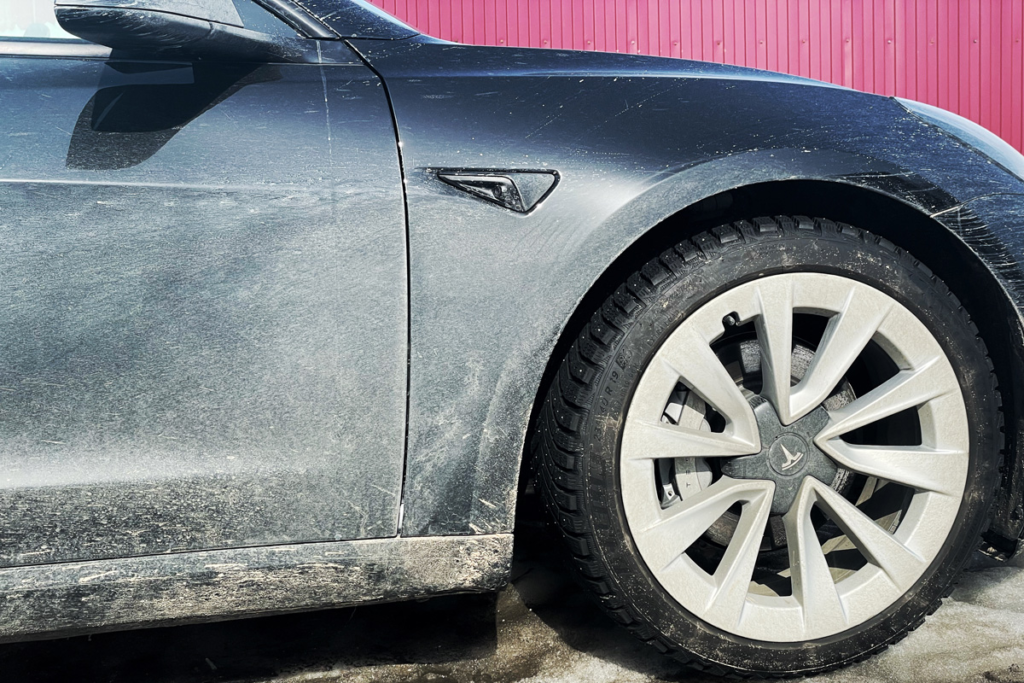
Overall, the Tesla Model 3 mixes clever and questionable ergonomic decisions. For instance, the cameras in the front fenders are excellent. They remain clean, thanks to well-designed aerodynamics. Furthermore, these cameras aren’t just for autopilot; flipping the turn signal lever activates them until the lane change is complete, ensuring no blind spots persist. Though habitually, I find myself checking both the central monitor, which feeds the camera views, and the mirrors. The central screen serves as a control hub with excellent graphics, rapid responsiveness, and a plethora of features ranging from technical details to Netflix and arcade games.
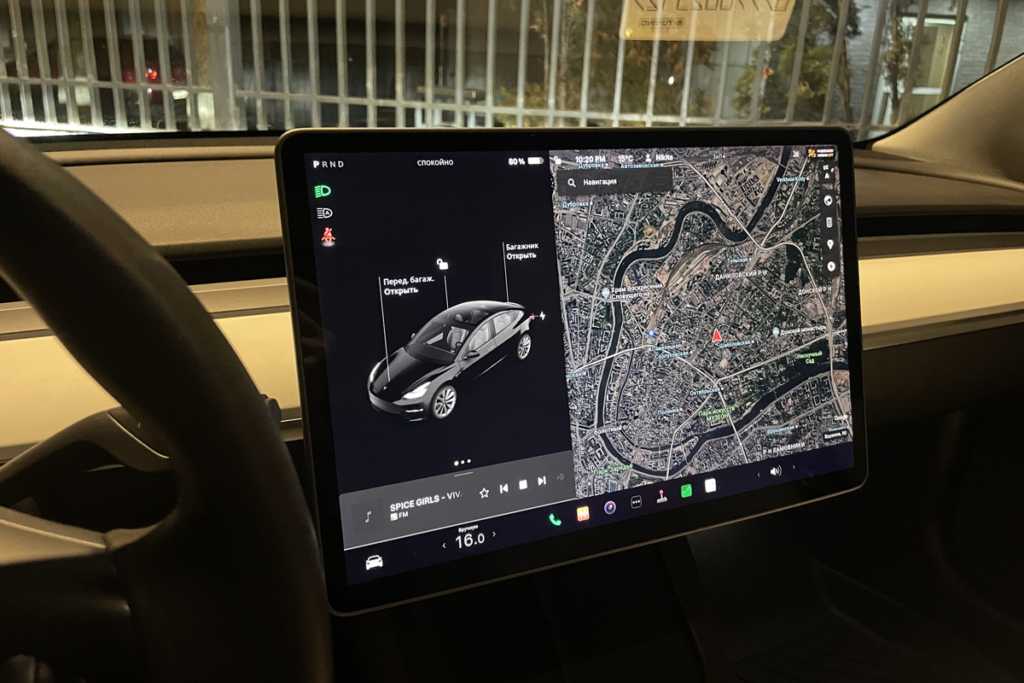
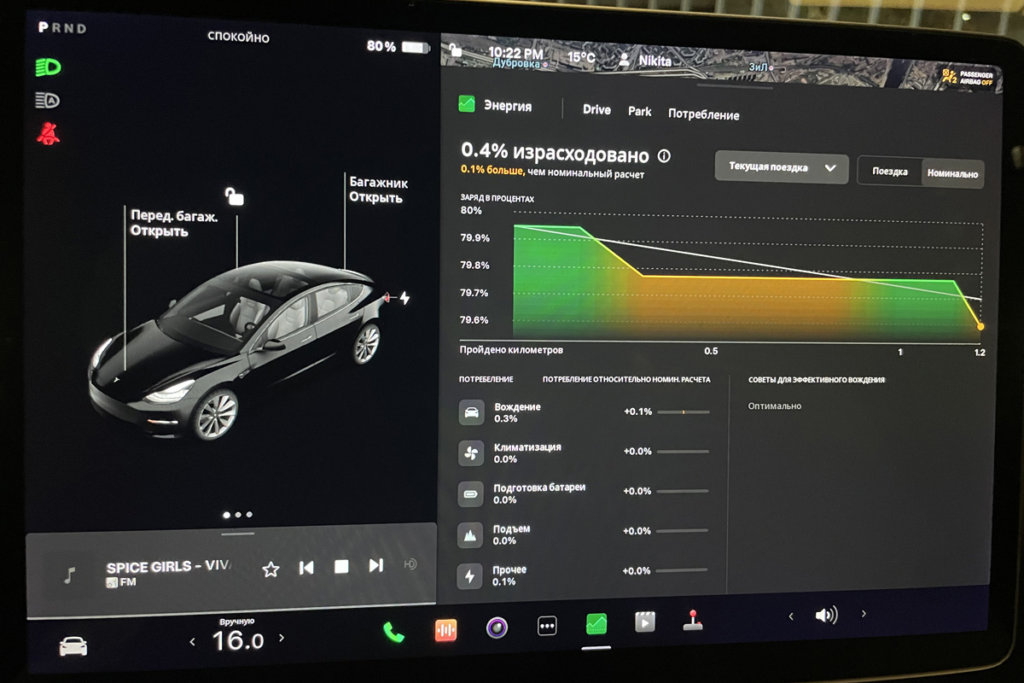
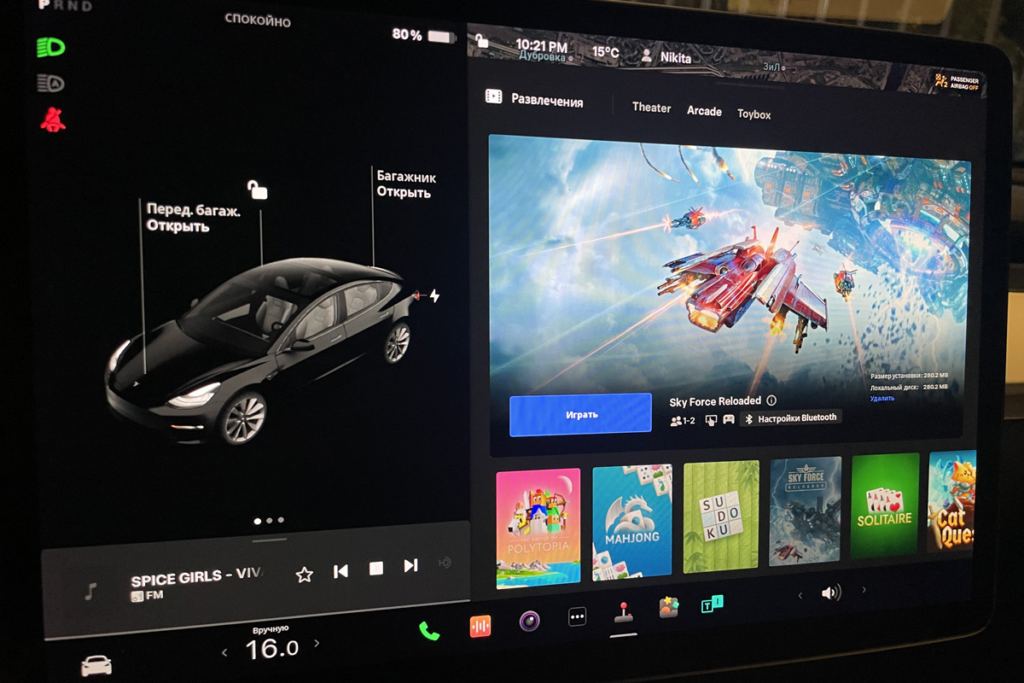
Conversely, the Tesla’s windshield wiper controls are poorly implemented. Need a single wipe? Tap the button at the end of the left lever on the steering wheel. Want to spray the windshield? Press harder. Switching modes requires navigating the on-screen menu, though recent updates allow some control via the steering wheel dials. However, nothing beats the convenience of a simple lever flick, particularly when you’re driving and need to quickly clear your windshield after being splashed by a passing truck. There’s also an automatic mode, but it tends to act erratically—ignoring heavy rain or wiping furiously across a dry windshield.
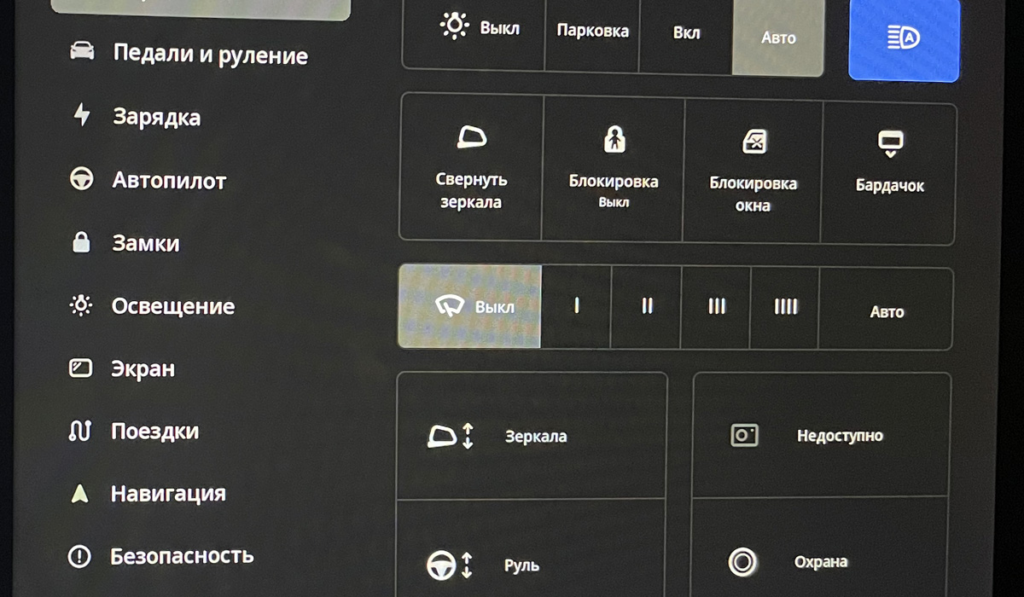
Among the other irritants are the recessed door handles—self-explanatory in their inconvenience, especially during winter. Fortunately, they are manually operated, and a firm tap usually does the trick.
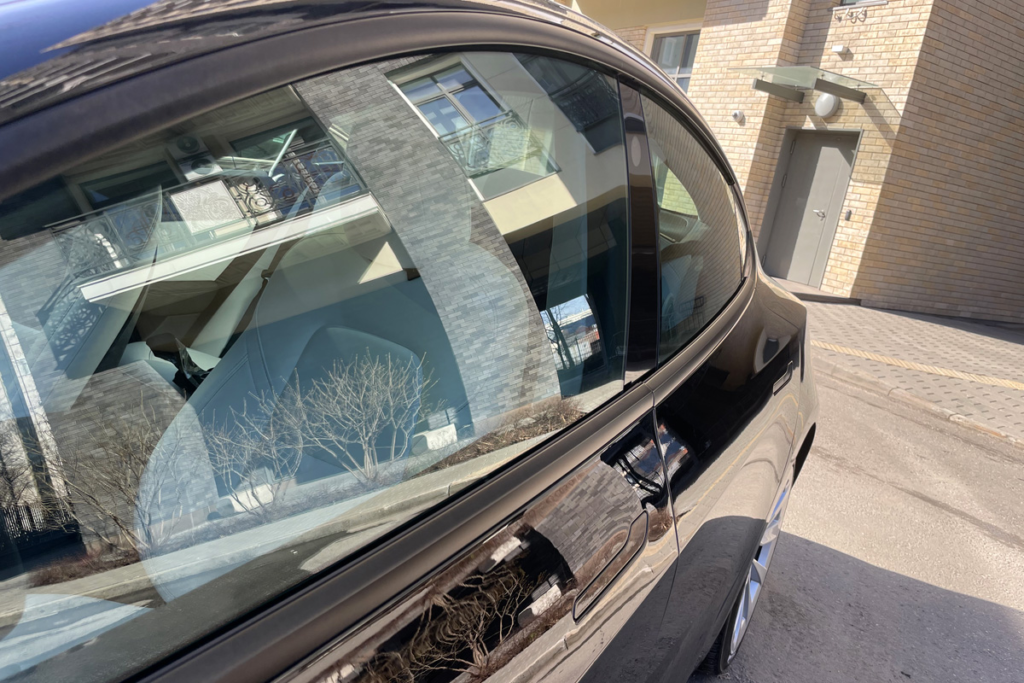
The trunk lids round out my list of grievances. Tesla features two trunks. The front trunk quickly accumulates a snowy ice crust in winter, rendering it inoperable. This too is a result of aerodynamic design, where not even high speeds can clear the snow accumulation. The rear trunk’s design causes any accumulated snow to fall directly into the luggage space upon opening—a likely oversight in aerodynamic optimization, though hardly practical.

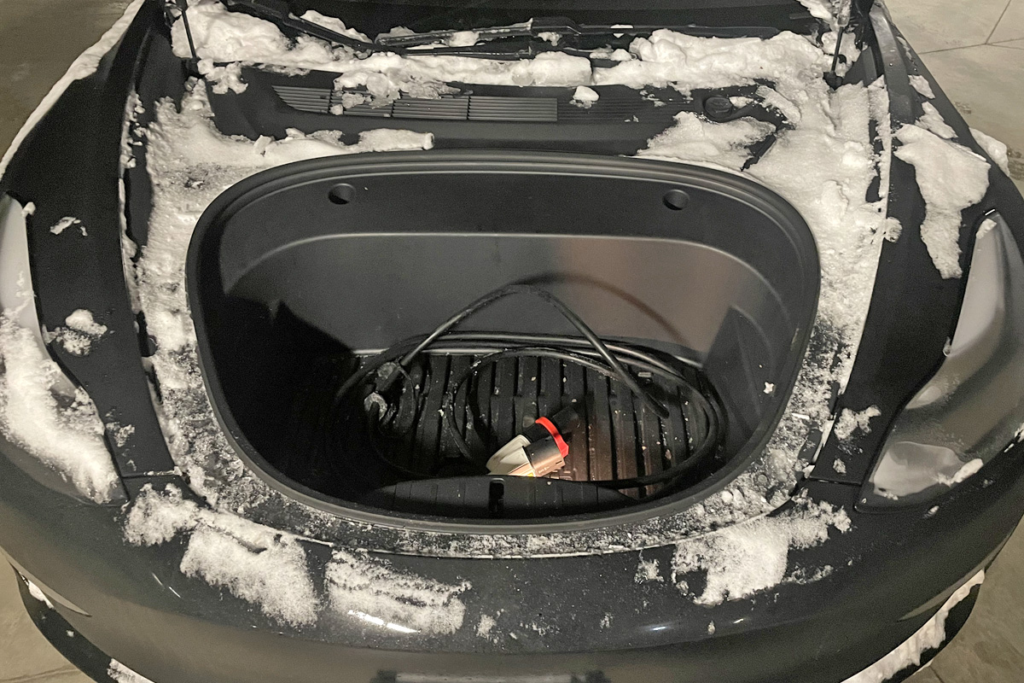
The trunks themselves are reasonably user-friendly. The front holds essential car gadgets like chargers and washer fluid—good enough for small items like a backpack. The rear trunk is used as intended, for larger luggage, with a spacious sub-floor deserving a special mention for its utility.


Continuing the evaluation of my Tesla Model 3, there are a few comforts I find lacking, notably a heated windshield and steering wheel, features missing from the Californian specification. While I could lament the car’s mediocre sound insulation, it’s never been a major concern for me. In other aspects, the Model 3 offers more than enough comfort. It boasts excellent parking sensors and cameras, comfortable seating, ample storage between the front seats, a missing central tunnel, and good visibility.
You might notice I’ve emphasized the shortcomings more than the advantages. The reason is simple: owning a Tesla is like owning an iPhone. It may not seem special, but everything is designed to be maximally intuitive and convenient. Therefore, every shortcoming feels far more significant against this backdrop than it actually is.
So, how does it actually drive?
Tesla excels, without question. It responds superbly at any moment, under any condition. The thrill of electric acceleration, especially being able to outperform sports cars in a family sedan, is truly exhilarating. However, this thrill fades after a couple of weeks. What remains is the active safety feature, allowing you to easily merge into traffic or avoid collisions. Within legal speed limits, the Tesla handles everything effortlessly.
Handling? That’s another strong point. The short, sharp three-spoke steering wheel provides very clear feedback, and the car’s weight is perfectly distributed. All the right ingredients for a successful driving experience are there. However, there’s a significant caveat—the car’s weight. I’ve always preferred compact and lightweight cars, considering the Mazda MX-5 nearly perfect. But the Tesla’s 1.8-ton weight is palpable.
Picture attending a ballet. You’re in the audience, watching graceful ballerinas effortlessly glide across the stage. Yet, your preference for television comedies leads you to doze off by the second act. You awaken only to see the ballet has ended, replaced by a heavy-set janitor clumsily sweeping the stage. In this metaphor, the Mazda MX-5 is the ballerina, while the Tesla Model 3 is the cumbersome janitor.

Riding in a Tesla feels akin to maneuvering a heavy iron—a nod to the vehicle’s low center of gravity, courtesy of the battery situated in the floor. This design choice brings several benefits, but traditional petrolheads (sorry, Mikhail Iosifovich) may not appreciate them. Furthermore, the flip side of minimal body roll and stiff suspension is a lack of smoothness in ride quality. While the Tesla performs well on good roads, poor road conditions reveal the car’s rigidity, and the 19-inch wheels with low-profile tires don’t help.
Additionally, I find the brakes less than reassuring. Despite the regenerative braking system designed to aid the calipers, the stopping power feels inadequate. The Model 3 halts from 100 km/h in 46 meters, a full ten meters behind a BMW F30—notice the difference.
Ultimately, you must accept that dynamic performance and responsive steering don’t guarantee enjoyment. Instead, joy comes from other features, like the all-wheel drive’s excellent stability on slippery roads. Where rear-wheel drive demands precision handling, the Tesla allows you to simply accelerate confidently.
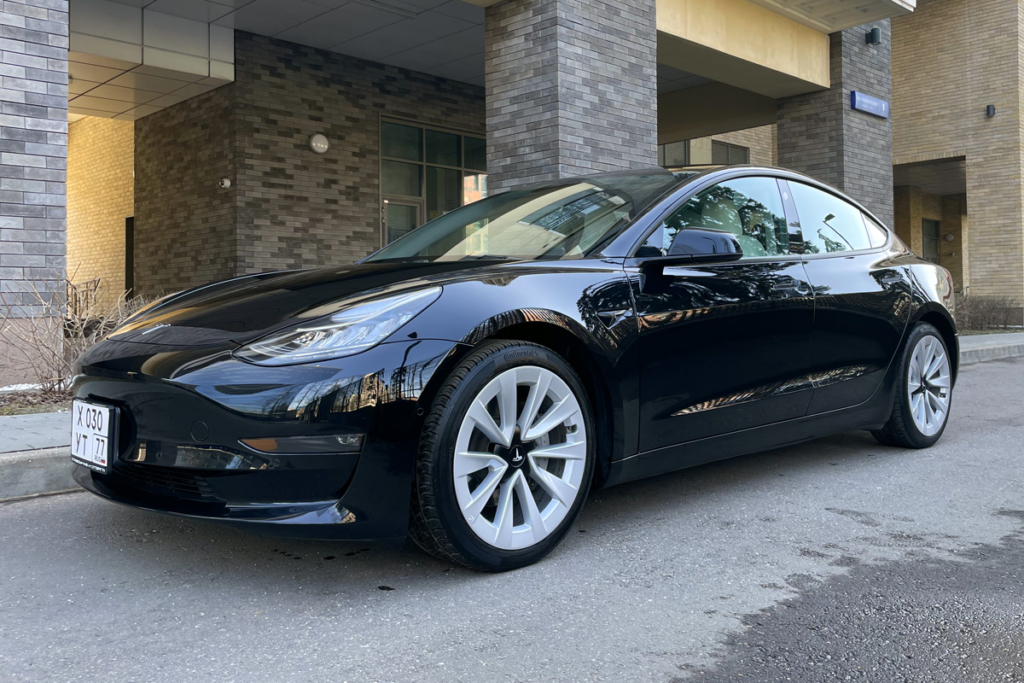
The car also supports one-pedal driving, a feature enabled by regenerative braking which converts the kinetic energy of the vehicle into electrical energy. Although this doesn’t significantly recharge the battery, it effectively slows the car, allowing for this driving style. Initially, you may only need to lift your foot from the accelerator to slow down significantly, adapting to rarely using the brake pedal.
However, this comes with its own set of challenges. Brake discs may rust due to infrequent use, especially in city driving—Tesla has implemented a mode to periodically ‘scour’ the discs to remove surface rust.
Adapting to this regenerative braking also requires relearning certain driving habits, like approaching speed bumps or handling sharp turns, as the vehicle begins to decelerate and load the front wheels as soon as you lift off the accelerator. This can make navigating bumps and imperfections in the road feel more jarring than in a conventional vehicle.
Despite these nuances, the allure of Tesla’s technology—like its semi-autonomous driving capabilities—remains strong. While the full potential of the autopilot system is not yet realized due to current navigation limitations, the basic features like adaptive cruise control and lane keeping assist greatly enhance highway driving convenience. Occasionally, the car may misinterpret slopes as obstacles and slow down unexpectedly, but these features generally contribute positively to the driving experience.
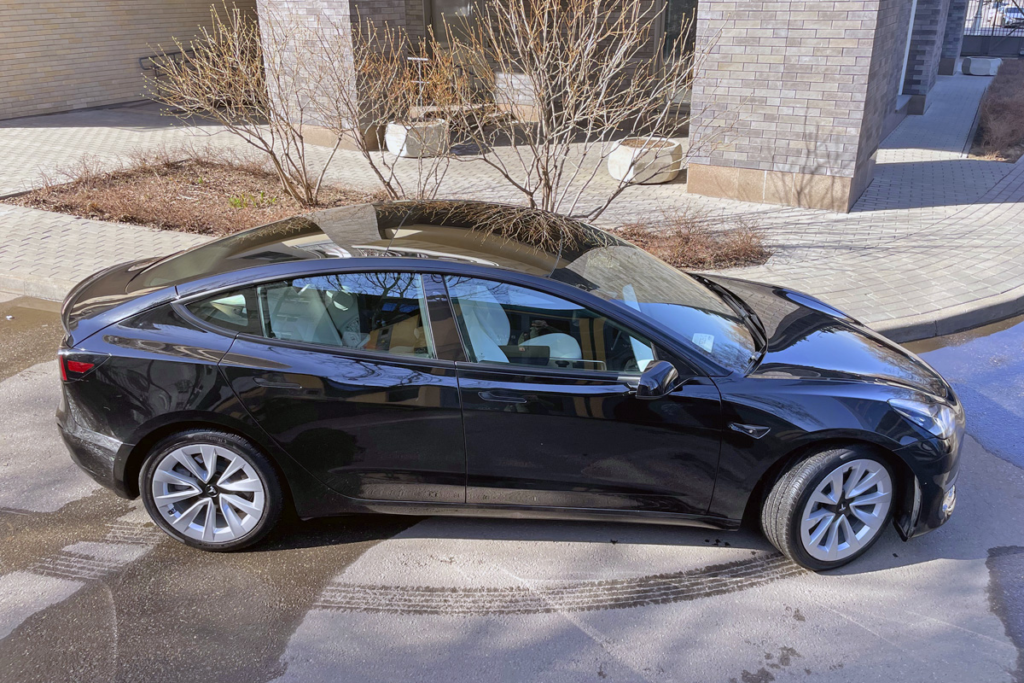
In conclusion, owning a Tesla has proven to be a pragmatic choice for me. It fulfills my needs for a family car economically and efficiently, without the emotional attachment typically associated with driving. It’s a rational, if somewhat passionless, relationship with a vehicle that delivers what it promises—efficient, practical transportation that occasionally surprises with its capabilities. If conditions change—like the imposition of fees for electric vehicle benefits—my pragmatic loyalty could waver, possibly in favor of more thrilling, albeit less efficient, automotive alternatives. Life, as always, will show us the way.
Photo: Nikita Sitnikov
This is a translation. You can read the original article here: Tesla для петролхеда. Часть третья: зачем все это?

Published August 08, 2024 • 7m to read

